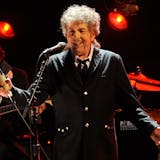Large events from high school proms to live Minnesota Twins games can resume this spring under a rollback of COVID-19 restrictions announced Friday by Gov. Tim Walz.
While public mask-wearing and social distancing requirements will remain, Minnesota will allow in-person work again, lift capacity limits for worship services and permit up to 10,000 fans at the Twins home opener April 8.
"We're winning, and this thing's coming to an end," said Walz, who encouraged people to plan for summer weddings and the May 15 walleye opener. "Let's just buckle down. We're going to know in the next three or four weeks if we've truly got this thing on the ropes and it's done and then we finish it."
Many rollback measures take effect at noon Monday, including an expansion of social gatherings to 15 people indoors or 50 people outdoors with no limit on the number of households. Bars and restaurants can operate at 75% of their indoor capacity and seat people in groups of four at bars in addition to tables.
Seated indoor events such as concerts will be allowed starting April 1 for up to 3,000 people. Unseated indoor events such as dances — which involve more unstructured movement and viral transmission risks — will be allowed for up to 1,500 people.
The state's work-from-home requirement for applicable businesses will be lifted April 15, but employers will be encouraged to allow workers to continue the practice.
Target Field will be different this spring as the Twins are switching to electronic tickets, banning bags at the entrance to limit personal contact and using a cashless approach that includes ordering food by app and picking it up. But Twins President Dave St. Peter said fans will experience all of the romance of popcorn and flyovers and first pitches and home runs, and he said the organization learned from the World Series, NFL and spring training in Florida how to safely host fans.
"All of those experiences prepared us for what we will roll out here at Target Field," he said.



